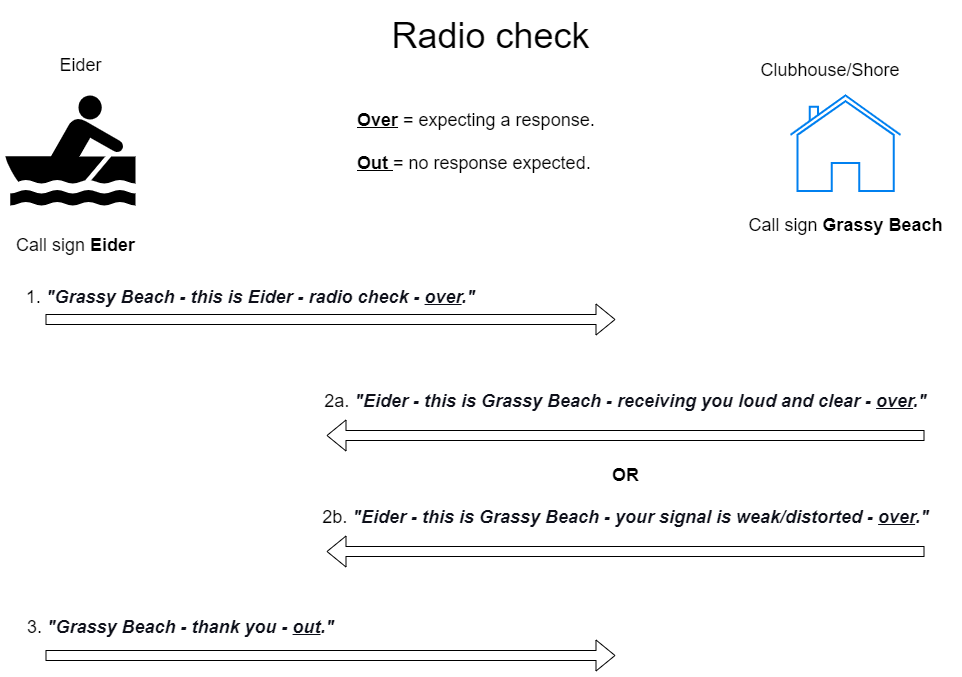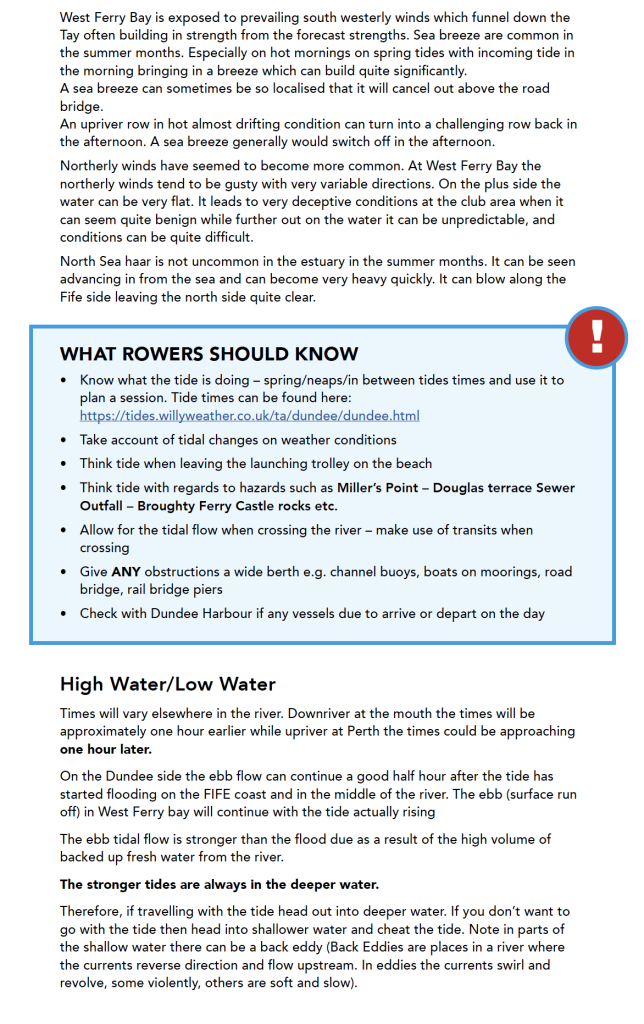Basic Skiff & Rowing Terminology
Like many sports, rowing has a language all its own. For the novice rower who's told to "back off”, it's helpful to know some basics.
The boat
At Dundee Sailing Club, we use a St. Ayles Skiff called Eider. The St. Ayles Skiff (pronounced Saint Isles) is a 4 oared rowing boat, designed by Iain Oughtred and inspired by the traditional Fair Isle skiff.
Some Skiff terminology

| Bow | Front of the boat |
| Coxswain (Cox) | The person who steers the boat |
| Gunwale | (pronounced "gunnel") The top edge of the side of the boat |
| Port | Left side of the boat while looking from stern to bow |
| Rudder | Part of the steering fastened to the stern of the boat |
| Tiller | The lever that you use to turn the rudder |
| Starboard | Right side looking from stern to bow |
| Stern | Rear of the boat |
| Stroke | The rower in the stern-most seat of the boat. They are also the one who sets the pace for other rowers. |
VHF use (the basics)
VHF Radio Check

Emergency or Distress Radio Procedure (MAYDAY)
Capsize procedure
Training Videos
Understanding Marine Buoyage
Basic Knots
Navigation
Fixed Seat Rowing Technique
Tides
50-90 Rule
The 50/90 rule for tides is a rule of thumb used in navigation to estimate tidal stream speeds. It states that after the first hour of a six-hour tidal cycle, the current will be flowing at approximately 50% of its maximum speed, increasing to about 90% by the end of the second hour, and reaching 100% of its maximum speed at the end of the third hour. The cycle then reverses, with the speed decreasing to 90% by the fourth hour, 50% by the fifth, and returning to slack water (zero speed) by the end of the sixth hour.
An introduction to nautical charts
Local Information and Weather

